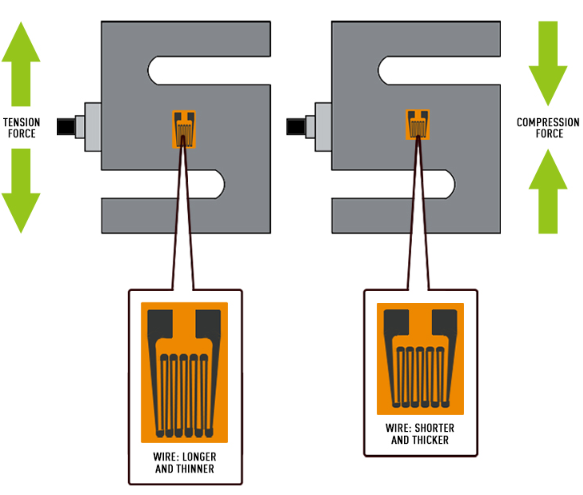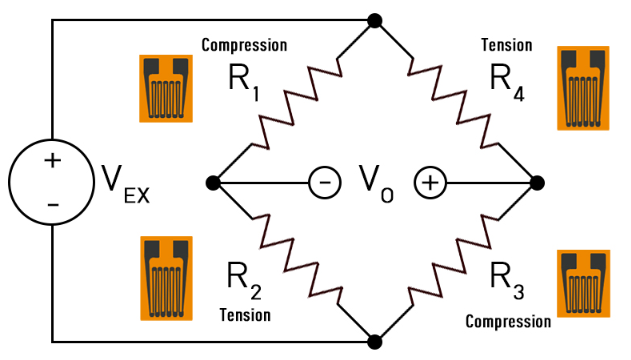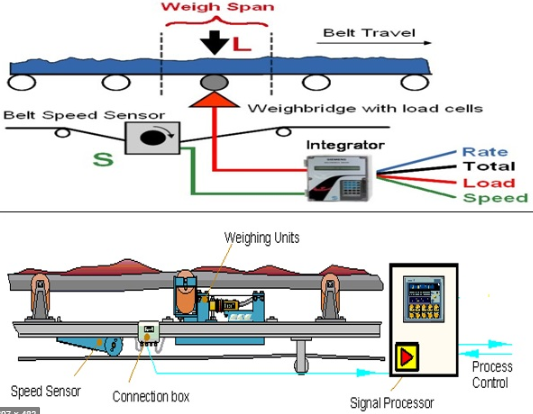Main keywords for this article are Methods of Weighing – Load Cell System – Instrumentation. Conveyor Belt Weighing. Spring Balance. Mechanical Lever System.
Methods of Weighing
The majority of weight scales in use today apply the measurement of force to determine weight. Force measuring devices typical employ one of the following principles to determine weight:
Mechanical Lever System
- Mechanical levers are the oldest weighing elements that use the principle of counterbalancing with the calibrated weights by the unknown weight to make the automatic beam scale.
- Mechanical lever scales are characterized by dependence upon force transmitting levers resting on precision pivots and bearings, and coupled by links to a moving analog indicator which is visually read. Accuracies above one part in 1000 are difficult to obtain, with one part in 2000 a practical limit.
- Scales which use a mechanical lever system coupled to a load cell and electronic rather than mechanical indicator offer some of the ease of use and features of a full electronic scale. Accuracies are limited by the mechanical lever system.
Spring Balance
- Springs are frequently used for force measurement.
- A spring balance converts a force into a static deflection or a dynamic frequency which is then converted to a signal proportional to the weight. The advantage of a spring balance is that the spring element used for this type of weight scale is not capacity limited. However, its disadvantages are change of unloaded spring length and constant with temperature.
Load Cell System
- Weight scales using the strain gage technology are by far the most widely used weighing system today. Strain gage load cells can detect extremely small deflections of elastic members and the means of detecting the deflections are electrical.
- The strain gages are electrically connected to form a balanced Wheatstone bridge and additional temperature compensation resistors are added to the bridge circuit for achieving the accuracy of the bridge over a wide range of operating temperatures.
- Weighing systems incorporating digital load cells are available today. Digital load cells can eliminate many of the problems inherent in transmitting very low level analog voltages through connectors and cables between an analog load cell and an analog transducer. These very low voltage analog signals in nondigital scales are subject to corruption from a variety of sources, including moisture, radio frequency interference, electrostatic discharge and lightning.
- Full digital scales typically use load cells containing microprocessor based electronics that provide a high level output, fully compensated digital signal, thus avoiding the transmission vulnerability of low level analog signals, and providing improved accuracy and stability.
Hydraulic Scale
- Hydraulic scales depend on hydrostatic load cells using the properties of liquids.
- Hydraulic scales are rugged, but subject to high hysteresis.
- One advantage of hydraulic scales is the elimination of intrinsic safety barriers and purged cabinets in electrically classified areas. Using an off-theshelf pressure transmitter, hydraulic scale may eliminate many of the problems with an installation such as instrument air, special enclosures an fewer spare parts.
Conveyor Belt Weighing
- Belt conveyor scales provide a means of weighing bulk materials while in motion.
- A belt conveyor scale consists of a belt conveyor which carries the dry granular material to be measured and a belt scale which is inserted in the belt conveyor bed.
- The weight on the belt conveyor is measured by sensing the force on 1 or more conveyor idlers. The motion of the material is measured by sensing travel of the belt with a device which produces an output representing a fixed distance of belt travel. A multiplier is used to determine total material weight of commodity that moved from point A to point B by multiplying the weight per unit length and total belt travel length.





